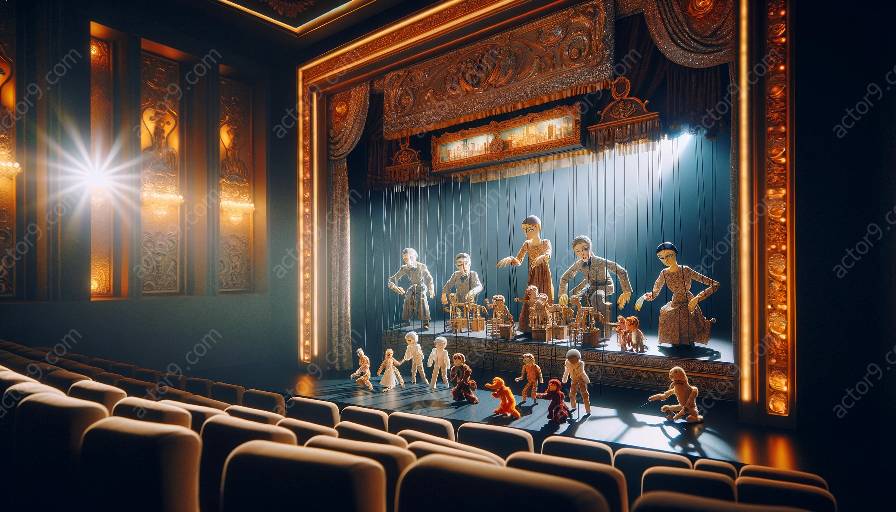Puppetry has a rich history that spans across cultures and traditions, and it continues to evolve as an art form. As the art of puppetry progresses, there is an increasing emphasis on sustainability and environmental considerations within the practice. This topic cluster builds on the history of puppetry and its contemporary relevance, focusing on how puppetry can contribute positively to the environment and society.
History of Puppetry
Puppetry has a diverse and fascinating history that dates back to ancient civilizations such as the Egyptians, Greeks, and Romans. Throughout the centuries, puppetry has continued to captivate audiences and hold an important place in various cultural and theatrical traditions. From shadow puppetry in Asia to marionette performances in Europe, puppetry has been an enduring and versatile art form, reflecting the values, stories, and perspectives of different societies.
The history of puppetry is intertwined with social, political, and environmental contexts, as puppets have been used to convey messages, entertain, and educate audiences. Understanding the historical roots of puppetry provides a foundation for appreciating its contemporary applications and the sustainable principles that can be integrated into the practice.
Sustainability in Puppetry
In recent years, there has been a growing movement within the arts to prioritize sustainability and environmental responsibility. Puppetry, as a tactile and visually engaging art form, has the potential to embrace sustainable practices and contribute to a more eco-friendly creative industry.
One of the key considerations in sustainability is the materials used in puppet making. Traditional puppetry materials such as wood, fabric, and natural fibers offer opportunities for sustainable sourcing and production. Artisans and puppet makers can explore eco-friendly alternatives to synthetic materials, reducing the environmental impact of their creations while preserving the tactile and aesthetic qualities of puppets.
Furthermore, the concept of sustainable storytelling in puppetry involves addressing relevant environmental themes and fostering ecological awareness through performances. By incorporating narratives that promote environmental stewardship and conservation, puppetry becomes a vehicle for conveying important messages to audiences of all ages.
Environmental Considerations in Puppetry
Environmental considerations encompass various aspects of puppetry, from the design and construction of puppets to the presentation and touring of performances. Innovations in sustainable production techniques, such as utilizing recycled and repurposed materials, contribute to reducing the ecological footprint of puppetry productions.
Additionally, the use of energy-efficient lighting, sound, and stage equipment enhances the environmental performance of puppetry shows, aligning with the principles of sustainable arts practice. By integrating environmentally friendly technologies and practices, puppetry productions can minimize their energy consumption and environmental impact without compromising artistic integrity.
Connecting History and Sustainability
The intersection of history and sustainability in puppetry highlights the evolving nature of the art form. By drawing inspiration from traditional puppetry techniques and narratives while embracing modern sustainable practices, puppeteers and artists can create impactful and environmentally conscious performances.
It is essential for puppetry practitioners to engage with the cultural heritage of puppetry, exploring how historical perspectives can inform contemporary sustainability initiatives. By acknowledging the historical relevance of puppetry in diverse societies, the art form can contribute to cultural preservation and promote sustainable values through its enduring traditions.
In summary,
puppetry offers a unique platform for integrating sustainability and environmental considerations into artistic expression. By recognizing the historical significance of puppetry and intertwining it with sustainable practices, the art form can continue to inspire, entertain, and educate while contributing to a more environmentally conscious creative landscape.
As society increasingly values sustainability and environmental awareness, puppetry can lead the way in demonstrating how the arts can align with these principles, making a positive impact on the environment and society.


























